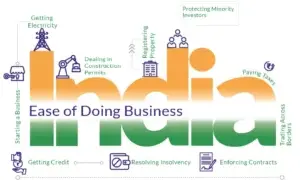E-learning can be used to restructure the education system in our country. The education system of our country is primeval and can be improved by many ways, among which e-learning is the most significant. The superannuated way of learning, i. e face-to-face learning can be swapped with the blended and online learning. Online learning can be synchronous and asynchronous.
This form of pedagogy has many recompenses such as expediency, augmented interaction, prominent course options, tractability, melioration of technical skills and lower cost. However, the detriments of such mode of teachings are lack of face to face communication, higher need for self-discipline and more work for instructor.
There are various platforms such as moodle, blackboard, webcity, adobe captivate prime, litmos, dacebo, slack and microsoft teams which are used as learning management systems and communicating tools. In order to teach effectually the irremissible skills are instructional design, organizational design, time management skills, online communication skills, aptitude to inspire communications and collaboration, digital literacy, using internet resources, monitoring student progress and communicating online.
The online courses should be excogitated by building camaraderie. The learners need to know the instructor as well as each other and participate in the discussions. Few learning outcomes should be established aligning with the curriculum. The action verbs such as describe, demonstrate, outline, design, contrast and create should be used in assignments and assessments.
An instructor can shape a virtuous content through vimeo, MERLOT, nearpod, wikitools, diigo and delicious. The content can be also instituted through MOOCs from Edx, coursera and udacity.
While manipulating a course the instructor has to keep in mind the universal design for learning model. Technology should make it possible to share the content in diverse formats, help facilitate participation, engross the scholars in content creation, open up potentials of learning activities, extend archetypal assessment strategies and upkeep more reliable assessment strategies.
Models such as SAMR should be followed which imply substitution, augmentation, modification and redefinition. An efficacious way in e-learning is to follow Bloom’s Taxonomy which implicates create, evaluate, analyse, apply, understand and remember.
Sharing and curating files and resources should include course roadmap, course expectations, assignments, online resources, websites, e-books, articles, blog posts, videos and podcasts. The learners should be able to contact the instructor through learning management system, communication tools such as Microsoft teams and slack. Benefits of pupils communicating with each other are that they learn from each other, answer each other’s questions, trouble shoot technical issues and practice important online collaboration skills.
The assessment should be both formative and summative. Formative assessments should include knowledge check and quiz, one on one conversation, surveys, rough drafts and project checks while as summative assessments should check whether the learner has gotten the level of mastery through tests, final exams, final presentations and final project. In conclusion teachers should be ready to narrow the gap between tech and teach or in other words putting the tech into teach.
Sajad_08phd12@nitsri.ac.in




